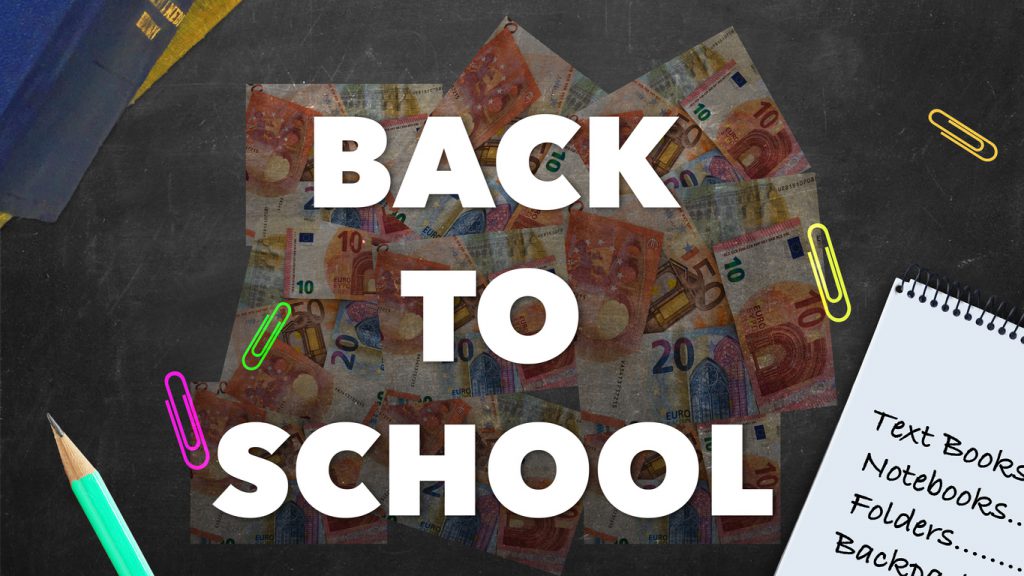Back to School Expenses: What to Expect
It’s that magical time of year, when parents are bombarded with back-to-school ads and lists of items their kids will need to return to school in the fall. For many families, they’re a reminder of the many educational costs to come – and to start budgeting accordingly.
Paying at the register for their kids’ education is a fact of life for parents and one that can be stressful if you’re short on cash. It’s been a financially trying year for many families due to the pandemic, so it’s understandable if you feel an extra pinch when those school emails start showing up in your inbox. Instead of making a bunch of impulse purchases at the CVS, get as much information as you can, starting with an idea of what’s essential this year.
What’s on Your Illinois School Supply List?
Being in charge of back-to-school spending might be overwhelming if you’re not used to the role or have multiple children. The list of items required by schools can seem a mile long. Here’s a preliminary list of Chicago Public Schools (CPS) requirements for grades 1-3:
- Pencils
- Pocket folders
- Notebook
- Crayons
- Washable markers
- Pencil-top erasers
- Supply box
- Glue sticks
- Scissors
- Ruler
- Kleenex and paper towels
Every school district is different, and lists are subject to specific requests by the teacher.
Depending on where you live, your child might be expected to show up to class with Ziploc bags, disinfectant wipes, hand Sanitizer, and headphones.
To create a proper shopping list, start with the school or district website, or give them a call to find out when their requirements will be released. You’ll get a sense pretty quickly of what’s expected of you. The administration should also be able to tell you what kind of costs to anticipate for the coming year.
How Much Does Back to School Cost?
A lot, if you include clothing and other common expenditures whose prices are on the rise. Smart budgeting, and looking for ways to save money, may be necessary for some families to make ends meet. According to one survey, the average parent will spend as much as $270 per student, compared with about $250 in 2020. And that’s per child. The average cost of expenses in 2020 was $789.49 per family.
While some school spending is necessary, there are ways to reduce the cost of your overall expenses. If you’re concerned about the pricetag, contact your child’s school as soon as possible to let them know. Maybe those dry erase markers on your Kindergartener’s list aren’t a deal-breaker after all. Gather items saved from previous years and determine what can still be used. And don’t buy anything you already have just because it’s on a list. Not every #2 pencil has to be brand new.
Savings Tips for School Books
As kids get older, reading material takes up more and more of their educational costs. Along with personal items like clothing, the costs of educational books and supplies are on the rise. Check out these tips for shaving some coin off your next bill:
- Buy used books from the school or online booksellers.
- Check the library.
- Use e-books.
- Sell your books at the end of the year.
- Borrow what you can.
- Look for digital or loose-leaf formats.
If you follow any of these tips, get the email addresses of your child’s new teachers. You’ll want to make sure which editions of textbooks are acceptable first. Cutting corners won’t be worth it if you end up with the wrong reading material.
Local Groups Can Help
If you’re feeling the pinch, reach out to local groups that help parents struggling to pay for educational expenses. Perhaps you can get help from Back 2 School Illinois (B2SI), a group that partners with community organizations and government agencies to distribute free school supplies to underserved students in need.
View School Expenses as Part of Your Overall Personal Finances
No one wants their summer vacation interrupted prematurely. But preparing for school-related costs now will help ensure your child is as prepared as possible for the first day of school, as well as the months and years to come. As you budget for the coming year, do your best to set aside extra cash for field trips and other unexpected fees.
Additional needs may pop up later, especially for older students covering the costs of SATs, college applications, and graduation gowns. If you’re concerned about these or other expenses, attend meetings and talk to other parents in your community. Making friends with local parents is a great way to feel supported and find out about future educational costs.
School expenses will feel like less of a burden if your overall financial situation is well-managed and under control. Community Currency Exchanges located throughout Illinois are a one-stop shop for getting also your finance needs met under one roof. Stop by the CCEA closest to you, and check out our blog for other money-saving tips today!

With over 350 locations, many open nights, weekends, and holidays (and several stores with 24/7 availability), you can rest easy knowing your financial needs can be taken care of when you need them most. We’re in the heart of every community. Don’t believe us? See for yourself.